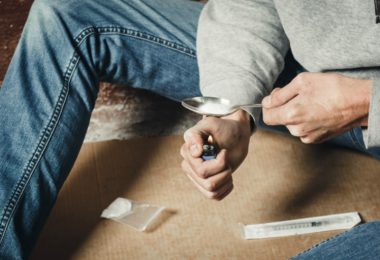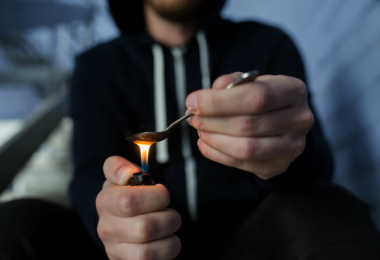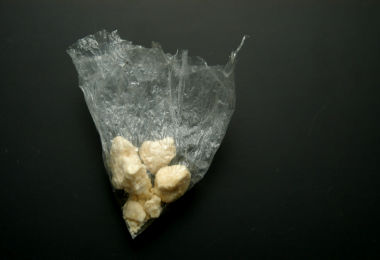Crack Cocaine Addiction & Rehab
Rehabilitation from Crack Cocaine Addiction
Cocaine is a powerful stimulant that creates a sense of euphoria and alertness. It originated in Columbia, but quickly became one of the most popular street drugs in the US by the 1970s. Within the next two decades, cocaine would spread throughout the country.
It didn’t take long for a new form of cocaine to be created: crack. Crack resembles small white rocks, it is so named for the crackling sound that it makes when it’s lit. It’s smoked in glass pipes, or directly free based into the lungs by being heated up and evaporated.
Almost as soon as the chemical hits the lungs, it creates that physical rush that so many crack addicts have come to crave. Crack cocaine is one of the most addictive drugs and can stimulate an addiction that can rival even heroin.
Choosing the right crack cocaine rehab can be the difference between life and death for many. This is a very serious addiction, and one that requires professional intervention to overcome.
Finding the Right Inpatient Crack Cocaine Rehab Center
Many addicts and treatment professionals recommend an inpatient treatment program for those suffering from an addiction to crack cocaine. This allows the addict to get away from their usual environment, and to start fighting their addiction without outside influences.
When choosing a rehab program, it’s important to find one that has the medical facilities necessary for the detox process. If a person has been a long-time user crack cocaine, then they may experience withdrawals or other issues that require medical attention.
There are also outpatient options, and the addict and their treatment professionals will need to choose the best option for that particular person. Each and every addict suffers in a very different way, and different treatment methods work for different people.
Picking Inpatient or Outpatient Treatment
An inpatient program is a residential program that allows the addict to live in the treatment facility for a period of 28 to 90 days. There are some facilities that have longer programs, but these are reserved for the most severe drug addicts.
Inpatient facilities are generally the best option for long-term users, or for those who suffer with addiction co-occurring with things like alcoholism or mental illness. Many crack addicts develop their addiction very quickly and devote a large portion of their life to it.
In order to change the way that they cope with stress and other issues, they may require an inpatient stay to restructure their lives. Outpatient treatment options are generally appropriate for those who have better control of their addiction.
These programs will provide therapies and treatment services for anywhere from 3–8 hours per day. Once the programs are finished, the person is released to go home. While outpatient treatment is much less expensive, it’s also less effective for those who have prolonged and serious drug addictions.
Many addicted people treat outpatient programs like a steppingstone after they graduate from their inpatient ones. This allows them to continue attending intensive treatment without having to spend all their time in a treatment facility. Choosing a program is something that needs to be carefully thought out with the help of treatment professionals who understand the nature of the individual’s addiction.
Is a Residential Rehab Needed?
The type of rehab is truly dependent on the individual’s addiction. Many professionals recommend an inpatient facility as the best way to treat an ongoing addiction. This is because of the real nature of addiction.
A person that has become chemically dependent on any substance has made physiological changes to their brain. Their brain has begun to replace some of its natural chemicals with the chemicals created by drugs and alcohol.
Crack cocaine is particularly potent, and the brain can become very reliant on it, quickly. When levels of the drug start to fall within a person’s system, they will start to experience withdrawals and serious drug cravings.
If a person has daily access to crack cocaine, then there’s a very good chance that they’ll give into these triggers and drug cravings early in the treatment process. In order to give them the best possible chance of success, an inpatient residential facility is really the best option.
What’s the difference between Tolerance and Dependence?
We often hear both the terms tolerance and dependence when discussing drug addiction. Tolerance is really a symptom of a growing chemical dependency. This refers to a person’s need to use more and more of the drug as they become increasingly addicted.
A person who has developed a tolerance has started to reprogram the chemical responses in their brain to accommodate the heightened level of chemicals created by the drug.
Drug dependence means that the brain has become completely dependent on a chemical in order to make a person feel and function normally. Without the drug the person will start to experience physical symptoms of withdrawal related to a physiological reaction.
Is Treatment for Crack Cocaine Private and Confidential?
Many fear that if they go in for addiction treatment they’ll face ridicule or public exposure. The truth is that most treatment facilities have laws they must adhere to concerning confidentiality and privacy.
If the facility operates under a medical license, they are expected to adhere to the privacy practices that all medical facilities must adhere to. This is a matter of legal obligation, and if they break these laws they can face serious fines and legal penalties.
Most businesses will allow you to take an extended period of medical leave with the right documentation from your physician. This isn’t something that needs to be publicly shared if you don’t want it to be.
How long is Rehab for Crack Cocaine?
The length of rehab is, again, entirely dependent on the addict’s personal needs, but it the typical recommended length is 90 days. Most treatment professionals don’t recommend a program that lasts fewer than 30 days. Treatment may need to be longer than normal if it’s being held on an outpatient basis.
It’s important to consider treatment as an evolving process. The initial inpatient or outpatient therapy should be followed up by an aftercare program. This should include community programs and personal therapy that creates an ongoing network of support.
Addiction is a chronic disease. This means that people end up fighting it for the duration of their lives. Additional treatment may be required on occasion when a person is feeling particularly stressed out, or if they feel that the drug cravings are stronger or more persistent than they were before.
What to expect During Rehab
Rehab usually begins with the detox process. The more intense the detox process is, the more likely it is that a person will need to go through it under the care of medical professionals.
Withdrawals from crack cocaine can include everything from chills to extreme fatigue that can last for a week or more. As soon as the person has reached a state of sobriety, they’ll need to start intense therapies dedicated to behavioral and cognitive issues.
Many people will rely on crack cocaine for a feeling of alertness and to give them the motivation they need to get through certain aspects of their day. Unfortunately, the effects from crack don’t last very long, and the person finds themselves using again and again throughout the day.
Different rehabs will offer a different set of therapies and available treatment options. It’s important to find one that offers the most effective options for you. It can help to find a treatment facility that caters to certain hobbies or alternative treatment methods. This is a fantastic way to start life over again with more positive interests.
During the day in a treatment facility, you can expect to undergo several different therapies. Your physician and treatment professionals will work with you to come up with a schedule that best suits your particular needs.
Payment Options for Treatment
Paying for treatment doesn’t have to mean going broke. In 44 states there are laws that make it illegal for certain insurances to deny paying for addiction treatment. You may have to fill out some additional forms, or get additional statements from your physician, but your addiction treatment will more than likely be covered by your insurance.
Many of the aftercare services will also be covered. There are programs like Alcoholics Anonymous and Narcotics Anonymous that can also help you to receive the treatment you need while in the community without breaking the bank. These programs are free to everyone and you are encouraged to attend them once your initial treatment is completed.
Even if your insurance doesn’t cover all of your treatment, most facilities will work with you to come up with a payment plan that works for you. These people want you to succeed, and you can find affordable options with their help.
Finding an Executive or Luxury Rehab Center
With so many insurances working with treatment facilities, luxury and executive treatment has never been as affordable. People can find private treatment facilities with resort-like settings at a reasonable cost.
There’s no reason that your treatment facility needs to be cold and clinical. Don’t be afraid to inquire about a higher-end facility, as it may help you to better seek your sobriety. Everyone deserves the best possible chance at life and choosing the right facility can make all the difference in the world.







